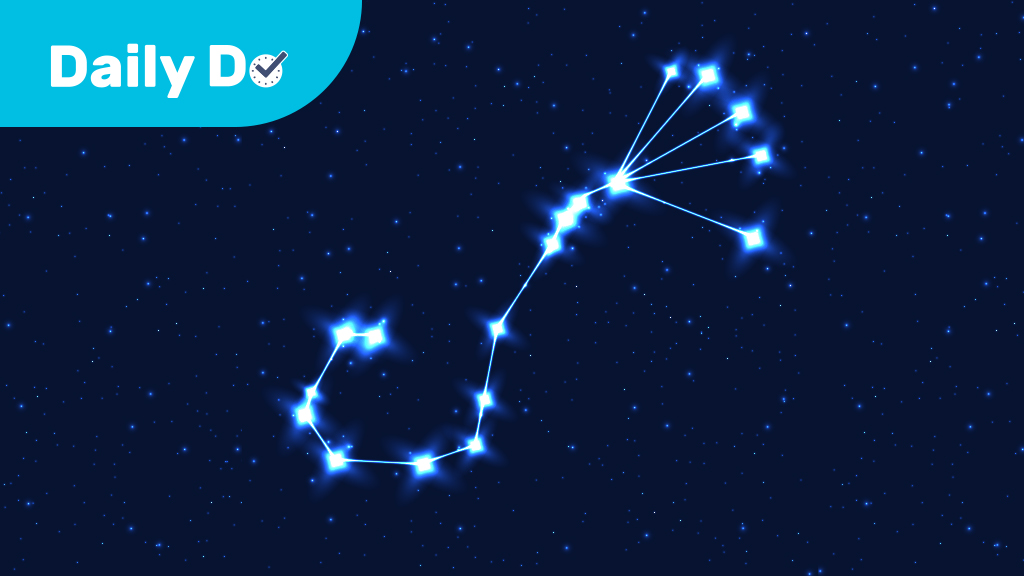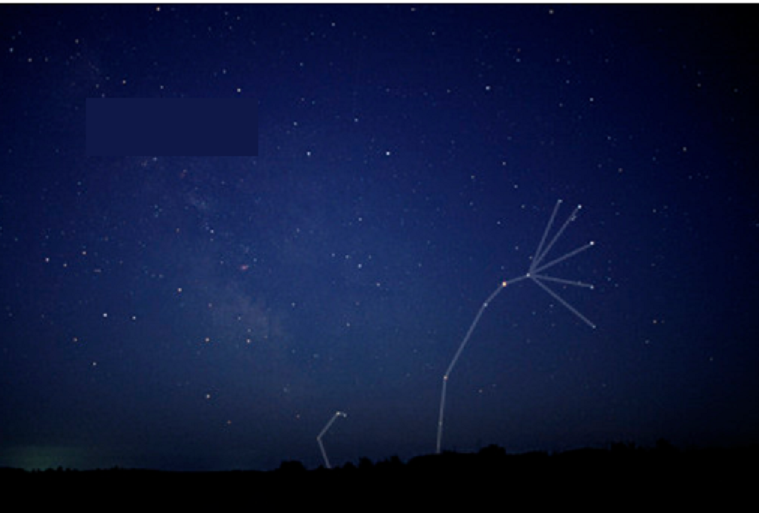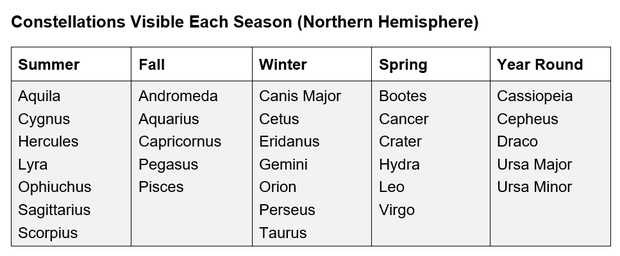Middle School | Daily Do
Why Can We See Scorpius Only in Summer?

Astronomy Crosscutting Concepts Disciplinary Core Ideas Earth & Space Science Is Lesson Plan NGSS Phenomena Science and Engineering Practices Three-Dimensional Learning Middle School Grades 6-8
Introduction
Scorpius is the brightest constellation in the July night sky and can be easily found even by the most amateur stargazer. Face south and look toward the horizon. Slowly move your eyes upward, and you should notice bright stars that when connected resemble a fish hook or upside-down question mark. Continue moving your eyes upward, and you'll see a big, bright red star called Antares (because of its size and color, it is sometimes mistaken for Mars). Have you ever wondered why constellations like Scorpius are only seen at certain times of the year?
In today's task, Why can we see Scorpius only in summer?, students engage in science and engineering practices and use the thinking tool of patterns (crosscutting concept) to figure out why some constellations are seasonal and others can be observed year-round.
Scorpius Constellation

Share the pictures of Scorpius with students, but don't reveal the name of the constellation. Tell students this is the brightest and most easily observable constellation in the July night skies. Ask students, "When you look at the pattern of stars in this constellation, what image do you see/what does it remind you of?" Give students time to independently think and record ideas. Then ask students to share ideas with a partner, with each turn lasting about 30 seconds. Ask 3 or 4 students to share their idea or their partner's idea with the class.
Share ideas other people from around the globe have about this constellation:
- Babylon (ancient city in present-day Iraq) — Scorpius (scorpion)
- Javanese people of Indonesia — Kalapa Doyong (leaning coconut tree)
- Hawaii — Maui's Fishhook
Students who have seen the Disney movie Moana may be familiar with Maui's Fishhook.
You might ask students why they think the same group of stars has so many different names and give them an opportunity to discuss that in pairs or small groups. Consider showing students the locations of Ancient Babylon (near Baghdad, Iraq), Indonesia, and Hawaii.
Say to students, "I'm going to use the name Scorpius because this is how it is labeled on most maps of the night sky. Look at this table and tell me what you notice about Scorpius." (It's only visible in summer.) "What do you notice about the other constellations in the table?" (Each constellation is only visible during one season.)
Students might ask, "Why would constellations only be visible during one season?" You might tell them you have been wondering the same thing yourself.

Tell students, "I'd like you to use your knowledge of the Sun-Earth system to create a model that explains why each of these constellations are only visible during one season." Give students time to create an individual model. As you walk around the room, you might ask students the following:
- What time of day do we see stars/constellations?
- How can you use the Sun-Earth system to explain the phenomenon of day and night?
- How can you use the Sun-Earth system to explain the seasons?
- If the positions of the stars don't change (noticeably), what else might be changing?
Encourage students to use words, pictures, and symbols to communicate their ideas. If a student is using mostly words, ask them how they might communicate these same ideas with pictures/symbols (without erasing words) and vice versa.
Ask students to share their model with a partner. To help students respectfully critique each other's models, consider using these partner conversational supports:
Speaker: I think ___ because ___. I think this relates to the science idea of ___.
Responder: You described ___. What evidence is that based on?
Make sure partners switch roles.
Next, create small groups of four students (two sets of partners). Ask the group to create a consensus model to explain why each of these constellations are only visible during one season. Remind students that consensus doesn't mean that the group is in complete agreement; it means they have reached decisions about what they can "live with" because the ideas most important to the group members (supported by evidence) are represented on the model.
As you walk around the room, you might ask students the same questions you did when they were working individually:
- What time of day do we see stars/constellations?
- How can you use the Sun-Earth system to explain the phenomenon of day and night?
- How can you use the Sun-Earth system to explain the seasons?
- If the positions of the stars don't change (noticeably), what else might be changing?
Again, encourage students to use words, pictures, and symbols to communicate their ideas.
Ask students to post their group models around the room. Ask groups to go to a different group's model (one student group per model) and post one adhesive note next to something they like about the group's model (the model includes something theirs did not; they like the way a component or interaction is represented) and one adhesive note with a question about the model. After two minutes, tell groups to shift right (or left) to the next model. Give students an opportunity to review three group models.
Give student groups an opportunity to revise their models based on observations of other groups' models and feedback they received.
Share the Seasonal Constellations, Part 3, video below. Give student groups an opportunity to add to or change their models. As you move from group to group, ask them why they are revising their model and to support their ideas with evidence from data (patterns of day and night and seasons, patterns in the constellation data, patterns observed in the video).
Tell students you have some additional data about constellations (see table below). Point out that there are some constellations that can be observed year-round in the Northern Hemisphere.
Ask students to work in groups to make a claim about why these constellations are observable year-round and to support their claim with evidence from their model and data (patterns of day and night and seasons, patterns in the constellation data, patterns observed in the video).
Engage students in a class discussion to bring the students to consensus. Begin by asking one group to share their claim and evidence, and ask them:
- Do we all agree with that? (If the answer is no, ask another group to share.)
- How are these explanations similar? How are they different?
- What ideas are we in agreement about?
- Where should we go next to help us with areas in which we are not sure/not in agreement?



